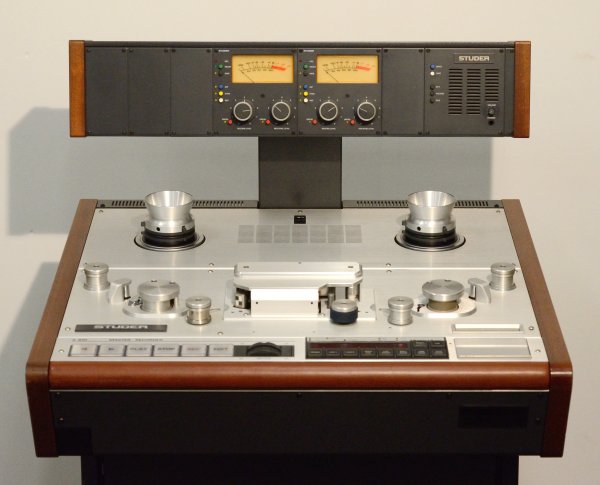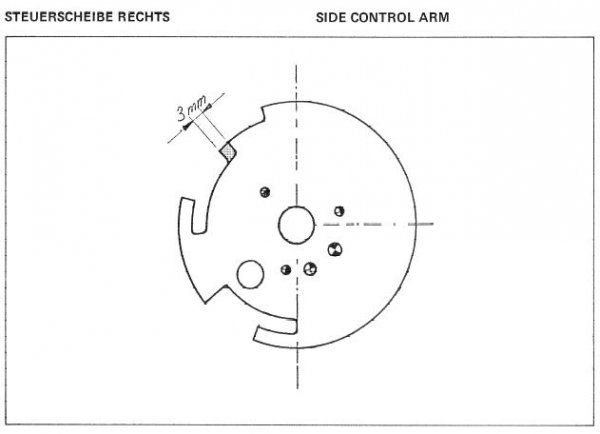-----Original Message-----
From: Fred Thal <
afthal@gmail.com>
Sent: Sunday, October 19, 2008 11:35 AM
To: Mike Lavigne <
mplav@comcast.net>
Subject: A820-2CH serial 1129 service summary
> Btw; I would appreciate it if you could write a paragraph of two about
> the general condition of my A-820. I will not be selling it..i love
> it. but I just want to have an accurate description of it's condition
> and
performance.
Hello Mike,
Your A820-2CH machine, serial number 1129, was first sold by Studer Revox America in 1987.
What was most remarkable about this machine on its incoming inspection at ATAE, was the generally excellent cosmetic condition of all cover metal and trim, which is a reliable sign that the machine was treated with respect by its former owner. Cosmetically, ignoring some very minor nicks in the wood side panels, only the clear plastic transport control pushbutton caps showed any signs of wear or age. (These often yellow if exposed to sunlight over many years. They are also very susceptible to cosmetic damage from contact with certain cleaning fluids. We can renew them with original parts at ATAE to restore their original appearance. However this was not done on 1129, as the original caps were deemed to be perfectly acceptable.)
It was also found that this machine was almost completely original inside.
In other words, there were almost no tell-tale signs that the machine had been dissembled for any prior repair work. However, the machine interior did have a heavy amount of dust accumulation throughout, which we mostly removed while it was here at ATAE.
The originality of the machine's interior is regarded as valuable, because we often see other examples of these machines that have been serviced or repaired by unqualified persons. Too often, such service or repair attempts will leave the machine in a compromised condition that may equate to a loss of performance.
On 1129, however, even the pinch roller appeared original. (However, this component was exchanged at ATAE for the new, Studer supplied, latest
version.)
Excepting a broken lamp housing for the channel 2 VU meter (these plastic housings become brittle with age and oftentimes break when people attempt to open them to change burnt-out VU meter lamps) and obvious repairs to the switching stabilizer assembly, there were almost no other signs of prior repairs, updates or other modification work found on 1129.
(All four of 1129's VU meter lamps were replaced with new ones at ATAE.
However I deemed the broken lamp housing non-critical, and left it alone.)
The capstan motor (original type 601.81) was examined and found to not have excessive wear and still exhibited a satisfactory drive surface finish (another sign of a relatively low hours machine) and was therefore not reconditioned. The top sintered bearing was lubricated with the Studer factory supplied special oil.
The spooling motors were likewise found to be in fine condition. Only the mechanical brakes showed signs of wear, but this condition was also deemed acceptable and left alone.
The original type 104 headblock (serial 14353) was sent to JRF for head relapping. A full 70 (seventy) percent of head life is remaining.
ATAE next installed the hardware and firmware updates to run updated firmware (per SI 130-89 and 131-89). This hardware updating included conversion to the rolling-style tape tension sensor feelers. The MPU memory back-up battery was also replaced.
Numerous electrolytic capacitors were renewed throughout the machine, including on the basis boards and in the main PSU. After proceeding to the flutter testing stage, eight sealed roller bearings were renewed with genuine Studer factory specified replacements. At that point, ATAE's 15 in/s flutter testing (peak-weighted per IEC 386) revealed performance exceeding (results better than) the published specifications.
After the installation of the new firmware, 1129 exhibited an anomaly with the positioning of the left guide roller in fast wind modes. The left guide roller position was found to park in very slight contact with the tape
(backside) in fast-wind modes. While this was deemed by ATAE to not constitute any real problem, it was reported to the factory and ATAE is presently conducting further research into this condition.
On the day of delivery, an intermittent output of the monitor speaker was observed, but the cause could not be identified in the available time.
1129 was delivered back to its new owner on October 7, 2008.
Fred Thal
ATAE StuderAnalog



